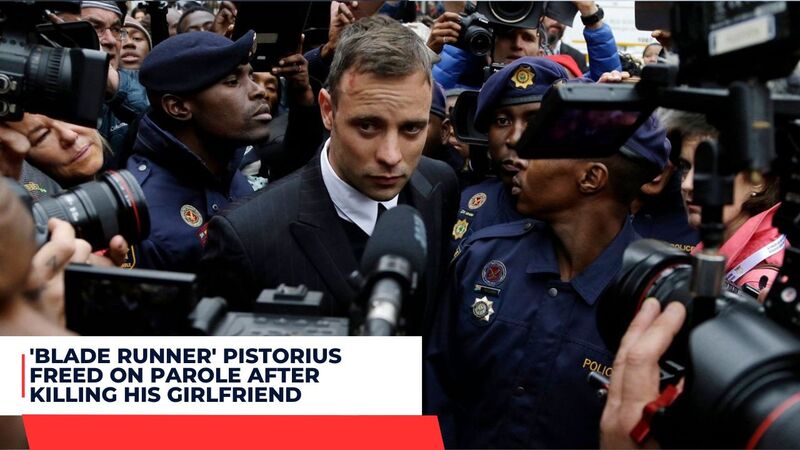Pistorius became notorious as “Blade Runner” due to his carbon-fibre prosthetic legs and later shot model Reeva Steenkamp on Valentine’s Day 2013 at his suburban Pretoria villa, alleging that he mistook her for an intruder.
At his parole hearing this month, a judge granted him permission to leave prison after serving half his sentence and set conditions that include attending programs on anger management and violence against women.
South African Department of Corrections
The South African Department of Corrections provides secure, humane environments while encouraging rehabilitation and successful social reintegration for offenders. Their mandate requires them to place offenders in prisons that offer optimal mental, physical, social reintegration; with an aim of decreasing likelihood of reoffending.
Pistorius will remain under strict parole conditions until his remaining murder sentence expires in December 2029, including restrictions on when and how often he can leave his home, alcohol consumption restrictions and being required to attend programs on anger management and violence against women as well as community service activities.
Double-amputee athlete Oscar Pistorius rose to international renown as a sprinter competing against able-bodied athletes during the 2000s and early 2010s, drawing international media coverage due to his spectacular achievements as a sprinter. On Valentine’s Day 2013, his worldwide fame caused headlines when he shot his girlfriend Reeva Steenkamp in his bathroom on Valentine’s Day 2013. For this act of violence he was charged with culpable homicide and sentenced to 13 years at Atteridgeville Correctional Center.

Pistorius Released
Prisoners on parole must abide by certain geographic and other restrictions in order to remain free. Failure to abide by parole rules could result in being sent back into incarceration.
A parole hearing occurs when a panel reviews a prisoner’s progress behind bars and decides if he or she should be released. They may look at previous convictions, hear from family and other sources as well as interview the prisoner directly about any possible risks of reoffense.
Pistorius was found guilty of killing 29-year-old model Reeva Steenkamp, also known as Blade Runner for her carbon fiber running blades, on Valentine’s Day 2014. He claimed he mistook Steenkamp for an intruder; following an increase in his initial sentence of culpable homicide by court order, 13 years and five months were added onto this sentence for murder; although after parole board hearings it has been agreed he can move into his uncle’s mansion located within Pretoria but heavily guarded and monitored by authorities.
Conditions
Before his tragic end, the double-amputee runner was an inspirational figure. Born with both legs amputated below the knee due to congenital conditions, he went on to become a world-class sprinter on carbon-fiber running blades.
Pistorius maintained during his trial that he killed Steenkamp by mistake in the predawn hours of Valentine’s Day 2013 when he shot four bullets through her bathroom door mistaking her for an intruder and firing four shots through it into her body.
Nxumalo stated that Nkosi will live on his uncle’s property in Pretoria’s affluent suburb and must wear an electronic tag and attend programs on anger management and gender-based violence, according to Nxumalo. Furthermore, alcohol consumption is prohibited and authorities can check his home at certain times of day as well as being informed before accepting employment opportunities; all these conditions were meant to send a “clear message that killing someone based on sexuality or gender is taken seriously,” Nxumalo stated.






